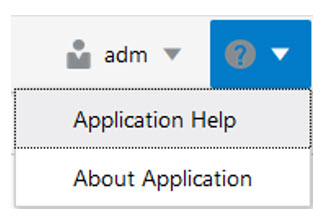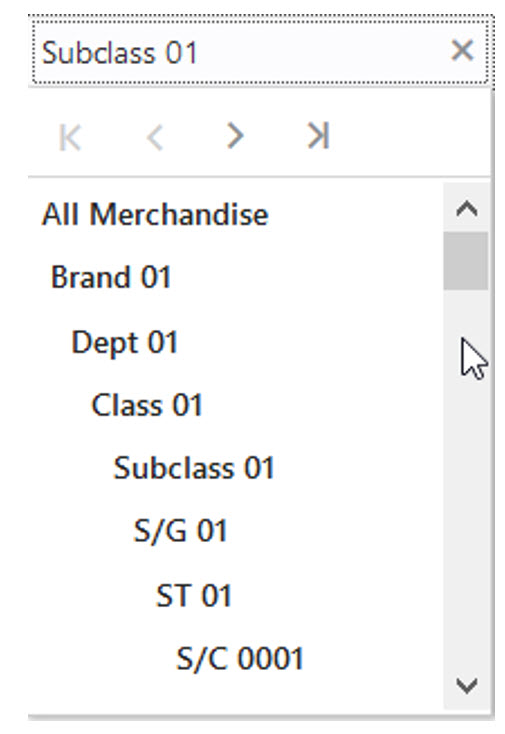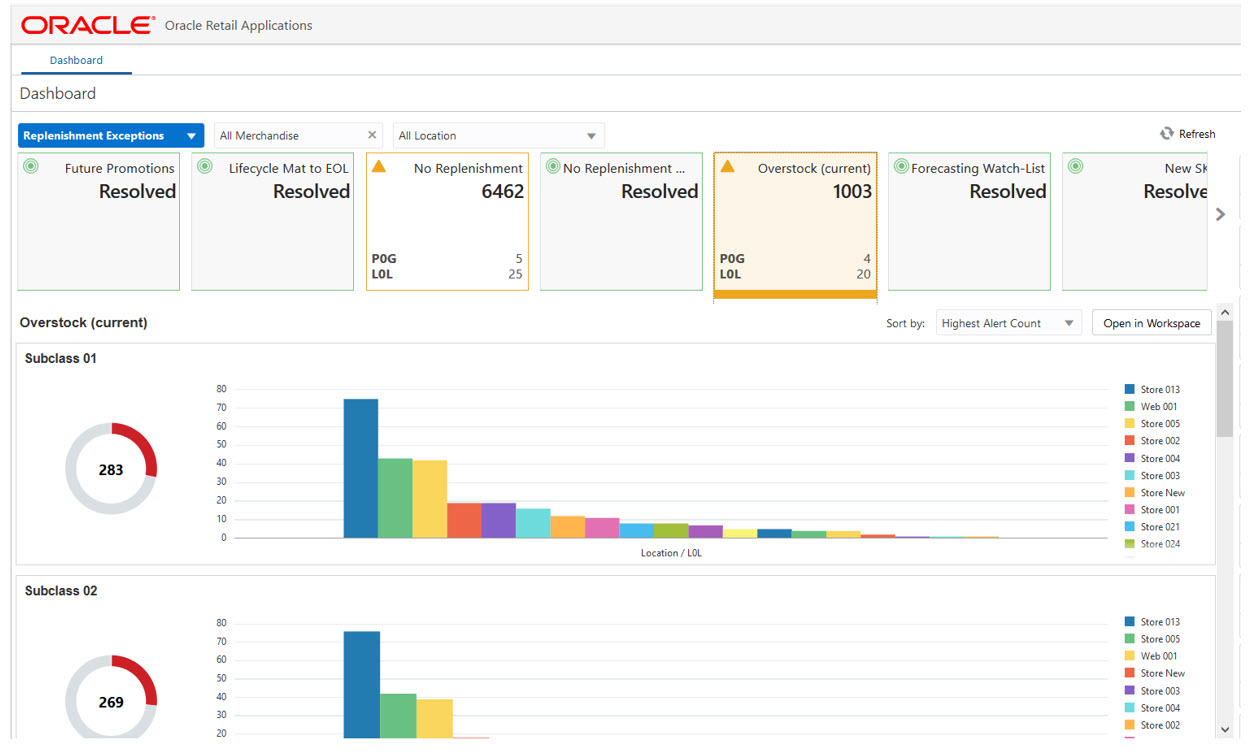10 Lifecycle Allocation and Replenishment Dashboard
The IPOCS-Lifecycle Allocation and Replenishment dashboard is the workspace that opens on login. You can use the dashboard to quickly analyze the health of the business. The dashboard needs to be refreshed periodically as new products, locations, and replenishment-related data are added. This typically happens weekly but depends on your administrator's settings. The measure data of existing products and locations in the dashboard can be refreshed at any time to view updated changes.
Note:
For additional information about the user interface, dashboard, and workspaces, click Application Help from the Help icon on the dashboard.
Figure 10-1 Application Help

-
Metric profile type
-
Overview
-
-
Exception profile type
-
Setup Exceptions
-
Replenishment Exceptions
-
Figure 10-2 Dashboard Profiles

The information in the metric and exception profiles is summarized in tiles, which can be filtered, for example, on the product, location, or any other hierarchy that makes sense as shown in the following image.
Figure 10-3 Merchandise Filter

Figure 10-4 Location Filter

The information presented is condensed in the tile metrics, which is also shown in a chart that is broken down into more detail.
In addition, there is the Administration dashboard which provides information about scheduled OAT tasks, or workspace build information. More information about the Administration dashboard can be found in the Oracle Retail Predictive Application Server Cloud Edition User Guide.
Overview Dashboard
There are five GA tiles in the Overview dashboard.
Figure 10-5 Overview Dashboard
Note:
This view has a dual Y-axis and the scales of the Y-axes could be different from each other.
Current and Historical In-stock Rates
The first tile displays information about how often stockouts occurred. If every four weeks, a stockout is registered, the in-stock rate would be 75%. This information is driven by how often stockouts occur. The tile displays current and historical fill rates.
Stockouts
The second tile displays information about the current and historical fill rates, which are related to service levels. This information is directly tied to the amount of lost sales caused by total or partial stockouts.
Breakdown of Sales
The third tile shows the breakdown of sales. The total sales are the sum of regular, promotional and markdown sales. The promotional and markdown sales are displayed as secondary metrics to gauge the amount of sales driven by these extraordinary events.
Promotional and Markdown Sales
The last two tiles display information about promotional and markdown sales. Besides the total units, additional information is displayed as secondary metrics. For instance, the tiles display how often the merchandise are promoted or marked down, as the promo or markdown frequency. Also, it shows the effectiveness of how promoting or marking down merchandise is increasing demand as compared to regular demand.
Setup Exceptions Dashboard
This is the first of the exception profile types available in IPOCS-Lifecycle Allocation and Replenishment. It is relevant to identify merchandise and location with set up issues such as, missing replenishment parameters/methods or supply chain network models.
Figure 10-6 Setup Exceptions Dashboard

The hit count represents the number of products in the subclass and location, within the store group, that are missing set up rules according to the configured business rules.
Exceptions
The information displayed in the tiles is based on exceptions, or business rules defined to check if the replenishment parameters and supply network model are set up for all product and location combinations that are expecting a replenishment plan recommended by IPOCS-Lifecycle Allocation and Replenishment. The exception definitions and expressions are detailed in the Appendix: IPOCS-Lifecycle Allocation and Replenishment Exceptions & Alerts.
Number of Hits Count
The main metric in the tiles is the number of hit counts which are based on the product and location filter settings. If the filter settings range products and locations to a narrower selection than, All Product and All Location, then the number should be reflected in the tile; that is, it should decrease.
Number of Subclass and Store Group
The secondary metric on the tiles displays the number of subclass and districts that are affected. Note that the dimensions are configurable.
Charts
Each tile comes with a set of charts where the hit count information is broken down to lower levels and sorted based on hit count.
Replenishment Exceptions
This is the second of the exception profile types available in IPOCS-Lifecycle Allocation and Replenishment. It is relevant to identify merchandise and location where the suggested replenishment needs the user’s attention. For example, a particular product and location might be in an overstock situation and may need the replenishment plan overriden by the user and a potential review of the replenishment parameters to reduce the overstock.
Figure 10-7 Replenishment Exceptions

Exceptions
The information displayed in the tiles is based on exceptions, or business rules defined to identify the outliers that need the replenishment plan recommended by IPOCS-Lifecycle Allocation and Replenishment reviewed. The exception definitions and expressions are detailed in the Appendix: IPOCS-Lifecycle Allocation and Replenishment Exceptions & Alerts.